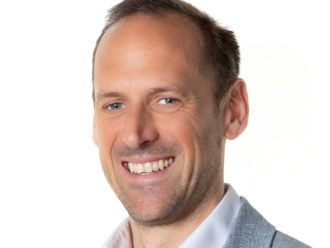By Ruben Sebban
Over the first half of 2014 the global hunt for yield has dominated emerging markets – coupled with the realisation of the political and social risks that characterise the EM asset class. As monetary tightening expectations in the US remain on hold, cash has continued to flow into these regions.
High yield goes hand in hand with high risk, and many investors simply taking a risk on/risk off approach suffered during the first quarter of 2014 as some of those risks materialised. Turkey, South Africa and Ukraine all saw strong reactions in response to social, political and geopolitical triggers. But fundamental imbalances have tended to be ignored given the low yields elsewhere.
In terms of yield, the ongoing flows into EM assets are understandable. The front-end of the Turkish yield curve at one year is yielding 8.85%, for example. So long as US Treasuries continue to yield less than 3%, the inflows will continue. Additionally the Turkish lira has appreciated almost 1% since the beginning of the year. The greater the inflows, the stronger the currency. It becomes a self-sustaining process and at least helps to finance Turkey’s current account deficit.
The curve inversion created by Turkey’s 550bps rate hike in January was seen as an opportunity by many investors to buy some steepeners (i.e pay rates on the belly or the longer end of the curve while receiving rates on the front end). This trade has performed quite well since the latest rate cut by the Turkish MPC and it should keep doing so as long as the authorities are expected to normalise rates at some point. The presidential election expected in August could see some tension coming back to the market so if investors want to buy Turkish assets naked, we would recommend buying a USD/TRY hedge as a precautionary measure.
Conversely in South Africa we are recommending putting on flatteners (buying long-term bonds while selling short-end bonds). Inflation is still high and the South African MPC has indicated it is in a hiking mode. Our view is that we are likely to see a rate rise in South Africa shortly.
In Central and Eastern Europe (CEE), Hungary and Poland have shown some signs of recovery, especially regarding employment and trade. Fundamentally their current accounts are in reasonable shape. Hungary has cut its central bank rates below Poland and we would not be surprised to see rates go lower in Hungary, given inflation is -0.1% year on year, which should provide some room for growth.
The big driver for CEE markets, of course, is growth in Europe, and that’s still failing to pick up meaningfully. Recent ECB measures (cutting the main interest rate, negative deposit rates and a possible ABS purchase plan) show that deflation risks in the EU are being taken seriously. These measures clearly show a divergence between US and EU monetary policy. But they could weaken EUR/USD and thus increase Europe’s competitiveness in the long run.
The events in Ukraine have raised a lot of questions as to what extent investors are prepared to bear political and social risks in their EM portfolio. The front-end of the Russian yield curve has inverted by 130 points between the one and five-year points, which has presented a lot of trading opportunities for investors that are willing to take on this kind of risk. On the FX side, the Russian rouble is weaker year-to-date, which leaves room for rouble gains if Moscow indicates signs of trying to ease tensions.
It’s clear that people now expect any rate hike by the US Federal Reserve to take place later rather than sooner, as the yield on 10-year treasuries currently implies. But investors can’t afford to be complacent: if the Fed were to suddenly announce a surprise rise in interest rates, we would probably see the same kind of outflows from emerging markets that we saw in May 2013.
To this end, the most important global theme at the moment is inflation. If there is any big surprise on inflation in the US or Europe, the impact on emerging markets could be massive and very rapid. As to countries that face a current account deficit, like Turkey and South Africa, inflation pressures will remain.
We’re now in a situation where emerging markets are at very different stages of their rate/inflationary cycle. For long-term investors, that requires being highly selective and strategic about which markets to overweight or underweight. Investors need to ask what are the main characteristics that are going to trigger risk events and game-changers in each country.
But when it comes to day-to-day trading, the focus remains stubbornly on global sentiment and the hunt for yield.
Ruben Sebban is an EM rates trader at Commerzbank




Comments